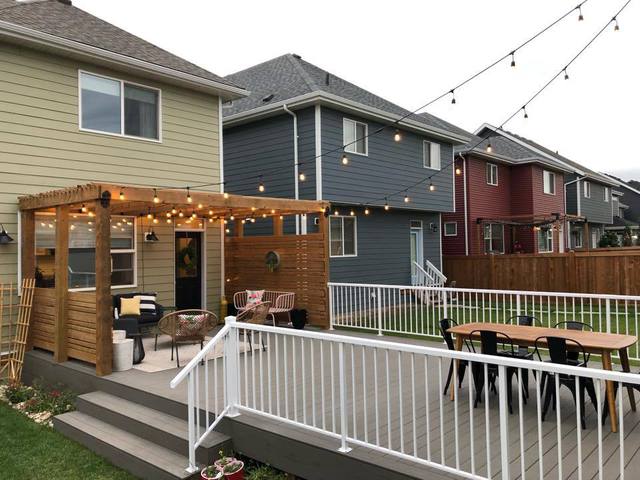Building a deck is an excellent way to enhance your outdoor living space and increase the value of your home. However, the cost of materials and labor can quickly add up, making it essential to find ways to save money without compromising on quality. With careful planning, smart decision-making, and strategic choices, you can achieve a beautiful and functional deck that fits within your budget. Here’s how to build a budget-friendly deck without sacrificing quality:
1. Set a Realistic Budget:
Before you begin your deck building project, establish a realistic budget based on your financial resources and priorities. Consider factors such as the size of the deck, choice of materials, labor costs, and any additional features or amenities you wish to include. Be sure to account for unforeseen expenses and contingencies to avoid budget overruns later on.
2. Choose Cost-Effective Materials:
Opt for cost-effective decking materials that offer durability, performance, and aesthetic appeal without breaking the bank. Pressure-treated lumber is a popular and budget-friendly option for deck framing and decking boards, providing strength and resistance to decay at a lower cost than hardwoods or composites. Consider alternatives to traditional wood decking, such as composite or PVC decking, which offer long-term savings through reduced maintenance and upkeep expenses.
3. Compare Prices and Shop Around:
Take the time to compare prices and shop around for the best deals on materials, tools, and supplies for your deck project. Visit multiple lumberyards, home improvement stores, and online retailers to compare prices, quality, and availability. Look for sales, discounts, and promotions, and consider purchasing materials in bulk or during off-peak seasons to save money.
4. DIY vs. Hiring a Professional:
Decide whether to tackle the deck building project yourself (DIY) or hire a professional contractor, weighing the pros and cons of each option. While DIY may save on labor costs, it requires time, effort, and a certain level of skill and expertise. Hiring a professional ensures quality craftsmanship and adherence to building codes but comes with higher upfront expenses. Consider your budget, timeline, and comfort level with construction tasks when making this decision.
5. Plan Efficiently and Minimize Waste:
Plan your deck layout and design efficiently to minimize waste and maximize material utilization. Optimize board lengths and cut patterns to minimize offcuts and leftovers, reducing material waste and saving money. Consider using salvaged or reclaimed materials for decking, railings, or other components to further reduce costs and environmental impact.
6. Consider DIY Deck Kits:
Explore DIY deck kits or pre-designed deck plans as a cost-effective alternative to custom-built decks. These kits typically include pre-cut and pre-drilled components, hardware, and assembly instructions, simplifying the construction process and saving on labor costs. DIY deck kits are available in various sizes, styles, and materials to suit different budgets and preferences.
7. Prioritize Essential Features:
Focus on essential features and functionalities for your deck while keeping non-essential amenities and upgrades to a minimum. Prioritize elements such as structural integrity, safety, and usability, ensuring that your deck meets your practical needs and requirements. You can always add decorative or functional enhancements later as your budget allows.
8. DIY Maintenance and Upkeep:
Take proactive steps to maintain and preserve your deck’s appearance and longevity through regular cleaning, staining, and sealing. DIY maintenance tasks such as sweeping debris, washing with mild soap and water, and applying protective coatings can help extend the life of your deck and minimize the need for costly repairs or replacements down the road.
9. Avoid Overbuilding:
Resist the temptation to overbuild or exceed your space and budget constraints by keeping your deck design simple and streamlined. Stick to a modest size and layout that meets your immediate needs and allows for future expansion or upgrades as your budget and lifestyle evolve. Avoid unnecessary embellishments or extravagant features that can drive up costs without adding significant value or functionality.
10. Invest in Quality Where It Counts:
While it’s essential to save money where you can, it’s equally important to invest in quality materials and construction techniques where it counts. Prioritize structural components such as footings, posts, beams, and joists, as well as fasteners and hardware, to ensure the safety, stability, and longevity of your deck. By allocating resources wisely and focusing on areas that have the greatest impact on durability and performance, you can achieve a budget-friendly deck without sacrificing quality.
With these strategies and tips for budget-friendly deck building, you can create a beautiful and functional outdoor space that enhances your home and lifestyle without breaking the bank. By carefully planning, prioritizing, and making informed decisions, you can achieve a high-quality deck that provides years of enjoyment and value for you and your family.










